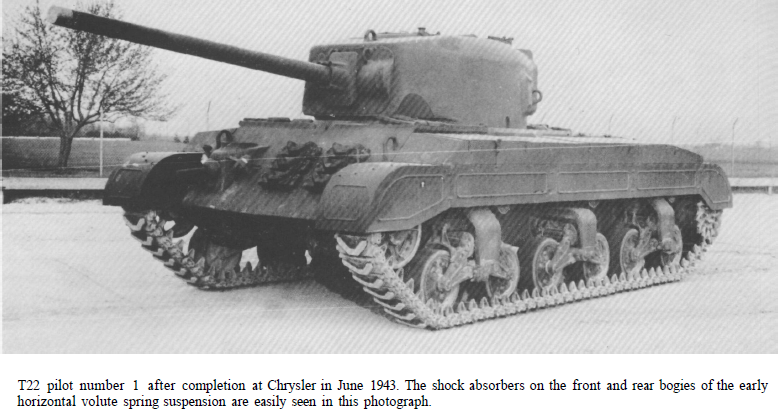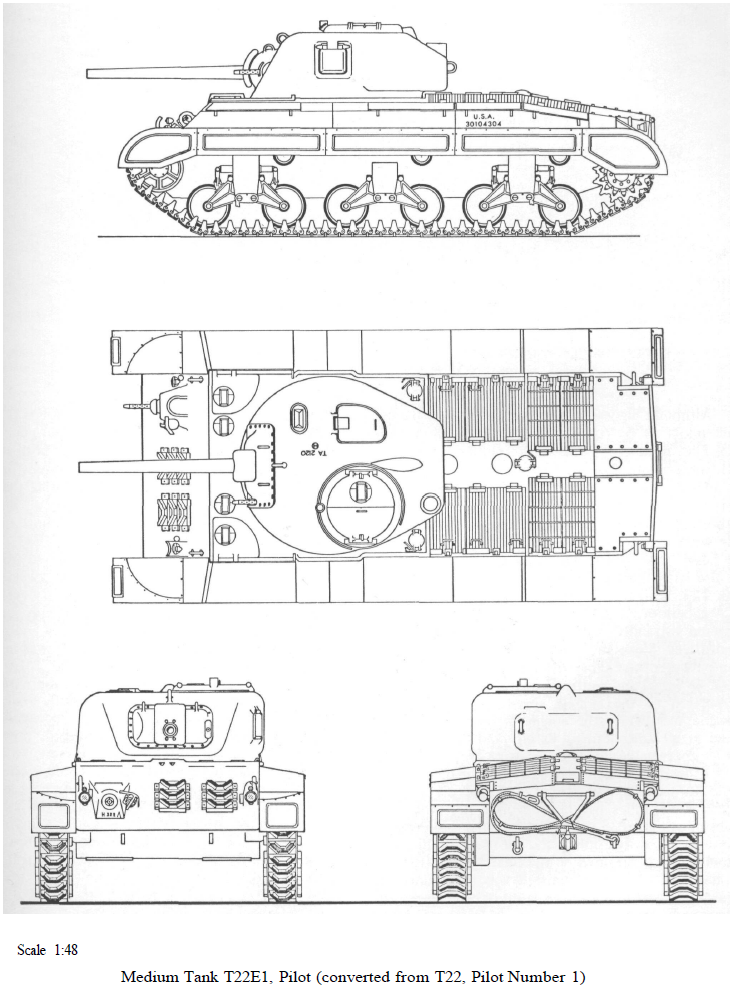marathag
Banned
I was thinking the idea of a design to have a rear transmission layout whilst still using as many of same parts as a normal Sherman as possible.

Chrysler T22

I was thinking the idea of a design to have a rear transmission layout whilst still using as many of same parts as a normal Sherman as possible.


One of the BMPT predecessors had a a multi-turret layoutLet's say I want a armored vehicle specifically for urban combat that can protect the crew and attack multiple targets at the same time (with the assumption that it's mainly fighting insurgents).
In such a situation, would it be practical to have a m113 apc or something similar and give it THREE small, fully enclosed turrets (located near each corner of the roof, excluding the driver hatch), with each turret having a .50 cal machine gun and a MK 47 automatic grenade launcher?
Ford GAA engine to Cletrac diff in the rear.Seriously?
Ford GAA engine to Cletrac diff in the rear.
The rest of the drivetrain was very early HVSS with standard M4 tracks, idler and drive sprockets. But same suspension mounting pad, you could do older VVSS if you adjust the fender clearance.
Same 69" turret ring so fit any US turret you want on top. The T22E1 tested a 75mm autoloader.
Except for the small issue of using a completely different hull.
Oops!Cool, but need to remove those Pz IV road wheels from the side. I wonder how it would actually have performed… 👍
OK, but we will need much more detail otherwise you are just asking for us to pluck something out of thin air without knowing what you really want. So…
What era?
What role?
How much money is available?
Light/medium/heavy or MBT?
Is it unique or based on anything else?
What is the story behind it?
etc, etc, etc
I'm not the one designing the tank, but does it have to a be a fully homegrown design? Based on the kind of requirements that you're talking about here, it looks like there's either room for some of the scrapped concepts that the US was working on during the Cold War, or just an off the shelf existing tank modified for their situation, something like an M48 Patton; by the timeframe you're talking about the M60 is phasing them out, so it makes sense that a Brazil aligned enough to the US to be willing to play whack-a-mole with South American communists might be able to get them at a pretty good price. Certainly they'd be able to operate in the Brazillian environment; Brazil actually has M60 Pattons, and the M48 served well enough in Vietnam so it should be suitable for the tropical conditions in Brazil.
- A blend of the M551 Sheridan – Armored Reconnaissance Airborne Assault Vehicle/Light Tank, used by the US Army from 1969 and Centurion Mk 5 Main Battle Tank – used by the Australian Army, with AVLB and ARV variants.


No, but was possible. The M66 HEAT round could have been used. While it was from the Pack Howitzer, the very same projectile for HE, the M48, and M64 Smoke, was used in both the75mm M1 Howitzer and M3 75mm.Guys I'm wondering something. Did someone come up with a HEAT round for the short barrel 75 mm Shermans? If so how much armor could it defeat?

Effective plastic-based [1] composite armour needs a couple of technologies to become viable. Kevlar-type fibres (which absorb energy really well), a compatible flame-retardent resin to bind the fibres, and design software so you can make very efficient components.Any thoughts on the ACAVP, aka the Plastic Tank and the potential for ATL AFV designs with this type of material?

File:Advanced Composite Armoured Vehicle Platform.jpg - Wikimedia Commons
commons.wikimedia.org
Militarized fibreglass composites are pretty much what Soviet-era textolite is, not quite the same but similar in concept.Effective plastic-based [1] composite armour needs a couple of technologies to become viable. Kevlar-type fibres (which absorb energy really well), a compatible flame-retardent resin to bind the fibres, and design software so you can make very efficient components.
None of that easy to bring forward sooner, so the easiest POD would include something to drive use of more conbentional fibreglass composites for additional protection -
Initially schurtzen type flat panels and bolt on plates, then shaped moulded panels. This could possibly occur in some kind of low level civil conflict.
You'd have mixed results using everyday fibreglass composites which splinter quite badly and can be very flammable, but they could be of some use. This could give rise to more serious testing of more advanced compoites as they become abailable.
The thing is, perforated or slatted steel is probably just as good or better, doesn't weigh much more (the holes don't weigh anything) and is probably easier to repair AND more likely to survive multiple hits.
[1] composites come in all kinds of variants including wood (natural) asbestos cement (inorganic) reinforced concrete (metal plus inorganic) glass or carbon or fabric or ceramic fibre reinforced plastics. Etc etc. I could go on, but let's just say there's a lot of it about.
